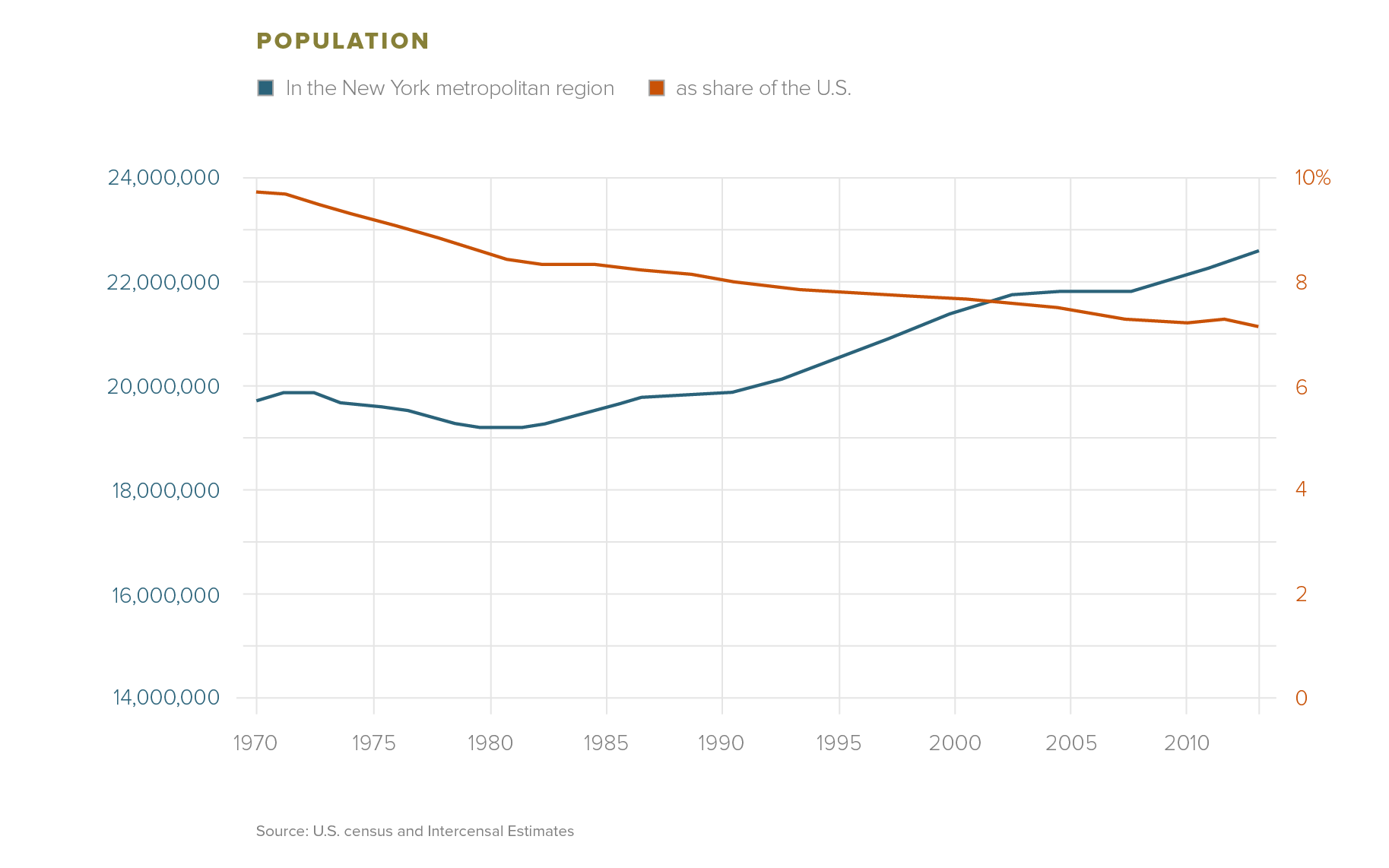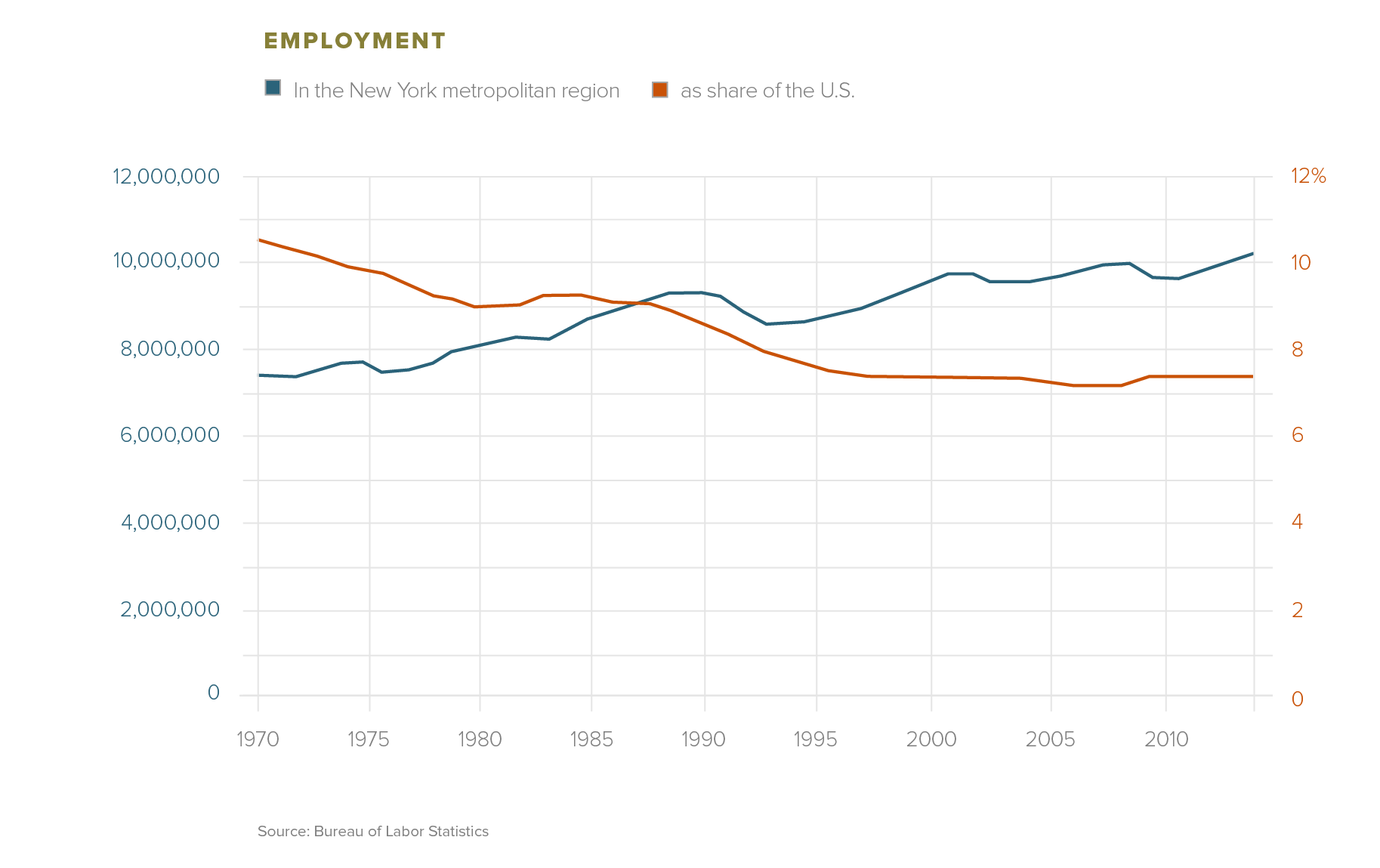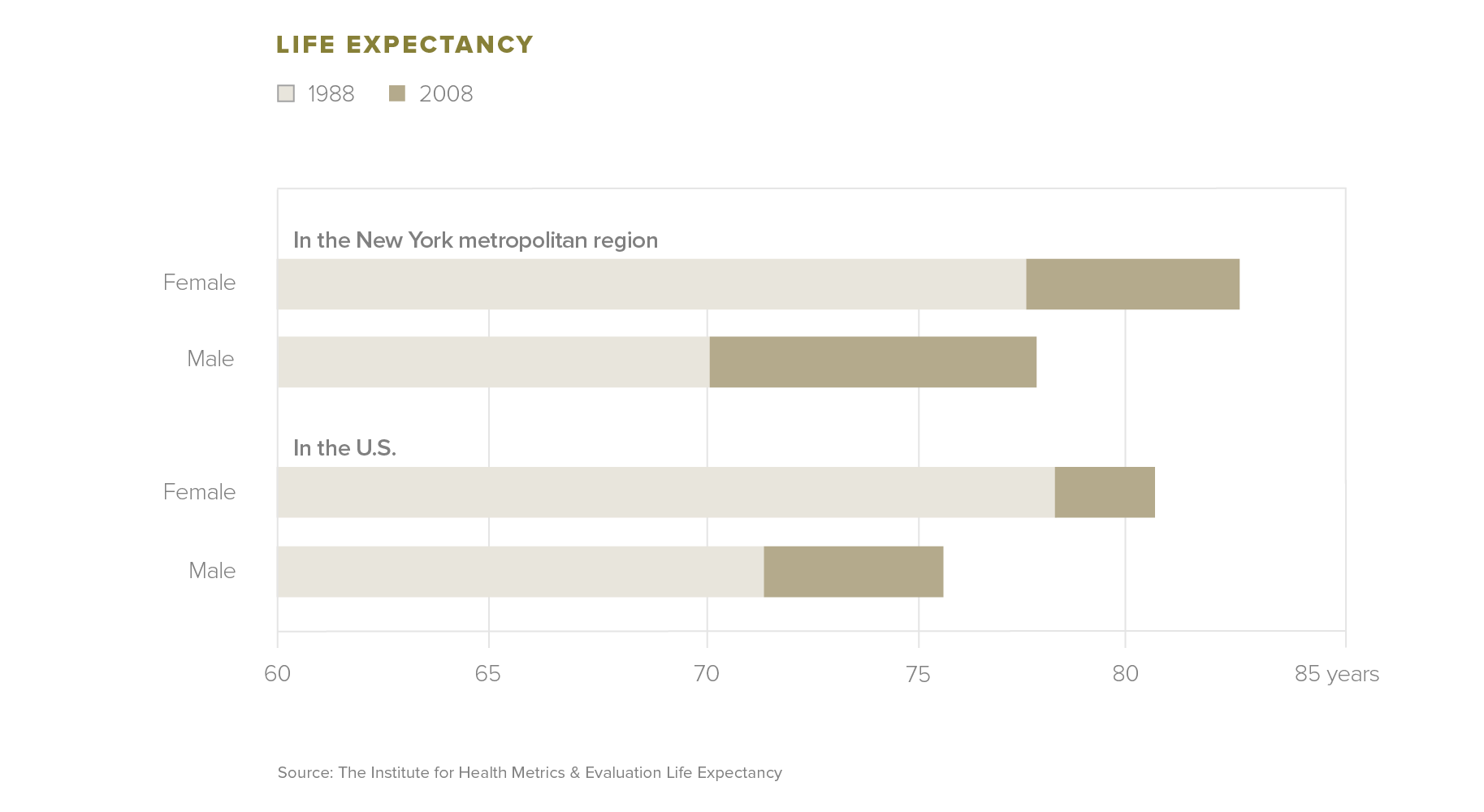The tri-state region has made enormous strides.
A number of global trends have fueled this renaissance, from economic changes that favor places with large concentrations of highly educated workers to demographic changes that make walkable, transit-oriented communities more desirable. Intentional policy choices, some made decades ago, have allowed the region to capitalize on these trends and lead an international urban revival.
 SCROLL TO LEARN MORE
SCROLL TO LEARN MORE
The region has gained 2.3 million residents in the last 20 years…
After decades of decline, the region’s relative share of the nation’s population appears to be stabilizing.

… and 1.5 million jobs.
The region’s share of national employment also has stabilized since the 1990s.

Life expectancy has grown much faster than the national average.
In a striking reversal, residents in our region now live longer than the national average. Local public health initiatives and environmental improvements, sharp declines in homicides and HIV-related deaths and national improvements in health care, including declines in smoking, all have played a significant role.

Crime has dropped dramatically in nearly all parts of the region – especially in New York City and other urban areas.
Continuing a trend that began in 1991, New York City’s crime rate dropped by 35% and Northern New Jersey’s by 26% between 2000 and 2011. Crime also declined in other parts of the region at rates similar to the nationwide drop of 20%.
Our world-class public transportation system gives people of all backgrounds access to millions of jobs.
Our transit system is the backbone of the region, providing residents with quick access to a large number – and range – of jobs. Someone living in New York City and parts of northern New Jersey can reach well over a million jobs within an hour by public transportation, and as many as three million jobs if they live in Manhattan. This advantage declines for those without a college degree, since a higher share of low-skill jobs are located in the suburbs.
Transit ridership is higher than it has been in decades.
Every year, more than four billion trips – or 184 per person – are taken on buses, subways, commuter railroads and ferries, and that number is increasing fast. No other U.S. metropolitan area comes close.

Residents are much more optimistic today.

‘I think Stamford is only going to get better.’ –Lisa, Fairfield County, Conn.
‘I have a lot of optimism for the Bronx…’ –Frank, Bronx County, N.Y.


